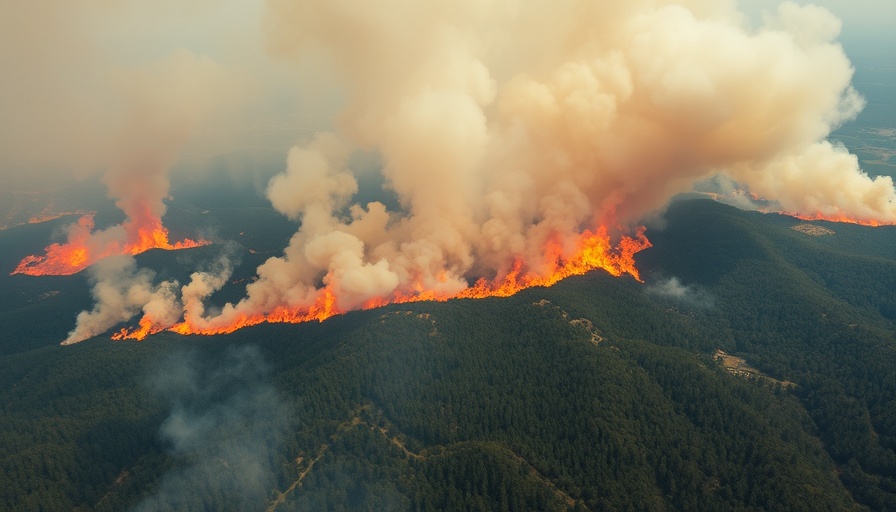
The San Jacinto County Wildfire: A Growing Concern
As fires raging through San Jacinto County continue to escalate, authorities are sounding the alarm on the potential threat to life and property. Currently, the wildfire has claimed a staggering 1,200 acres, but worse yet, it remains zero percent contained as crews mobilize to combat its ferocious spread. This alarming situation serves as a stark reminder of the increasing risks of wildfires, exacerbated by various environmental factors.
Understanding the Causes and Consequences of Wildfires
Wildfires are often ignited by natural factors like lightning or human activities such as campfires left unattended. In the case of the San Jacinto wildfire, experts are investigating the root cause while emphasizing the role of climate change in aggravating dry conditions and contributing to the fire's rapid expansion. A lengthy drought period and rising temperatures have made the region particularly susceptible to these devastating fires.
The Impact on Local Communities
The communities surrounding the Sam Houston National Forest are now facing transitional challenges as they prepare for possible evacuation. Local officials have deployed resources and personnel eager to safeguard residents and their properties. For many people, the threat is not merely the loss of assets but the emotional toll of dislocation and uncertainty. This situation underscores a growing concern about the preparedness of communities in facing wildfires, prompting conversations on safety protocols and emergency plans.
What This Means for the Future
The growing frequency of wildfires across the United States suggests that climate change is not a distant threat but an immediate reality. With the worsening effects of global warming, such incidents are likely to escalate, prompting a reckoning with how communities manage their fire risks. The U.S. Forest Service indicates an increase in annual wildfire expenditures, highlighting the financial burden of combating these fires.
How Communities Can Prepare for Wildfire Risks
Preparation at the community level can significantly mitigate risks. Local agencies are urging homeowners in fire-prone areas to create defensible space around their properties, remove combustible materials, and stay informed about emergency plans. Building awareness and fostering community programs can empower residents to take proactive steps, potentially saving lives and property.
Voices from the Frontlines
On the front lines, firefighters and emergency responders are battling formidable challenges as they grapple with intense heat and dry conditions. Their bravery and tireless dedication highlight the human element behind these emergencies. As communities rally to support firefighters and affected families, stories of resilience and hope emerge, showcasing federal and local response teamwork in action.
The National Response
As the wildfire continues to burn, national agencies are collaborating to offer assistance and resources where needed. Federal disaster declarations can provide funding and support, but it underscores the necessity of a cohesive, multi-level response to these emergencies. The U.S. Congress is increasingly called upon to hold discussions around enhancing wildfire preparedness and environmental policy reform, which has broader implications for national safety.
What You Can Do
Stay informed and engaged with your local emergency services to understand the scope of the wildfire threat. Those living in affected areas should consider developing personal evacuation plans and safeguarding important documents. Awareness can lead to proactive measures that prevent tragedies. As remote as the future may appear, now is the time to address wildfires on a community and national level.
This wildfire in San Jacinto County serves as a clarion call for collective action. As we navigate this challenge, let’s prioritize community resilience and preparedness to safeguard our homes and loved ones from the burning reality of nature's fury.
 Add Element
Add Element  Add Row
Add Row 



Write A Comment